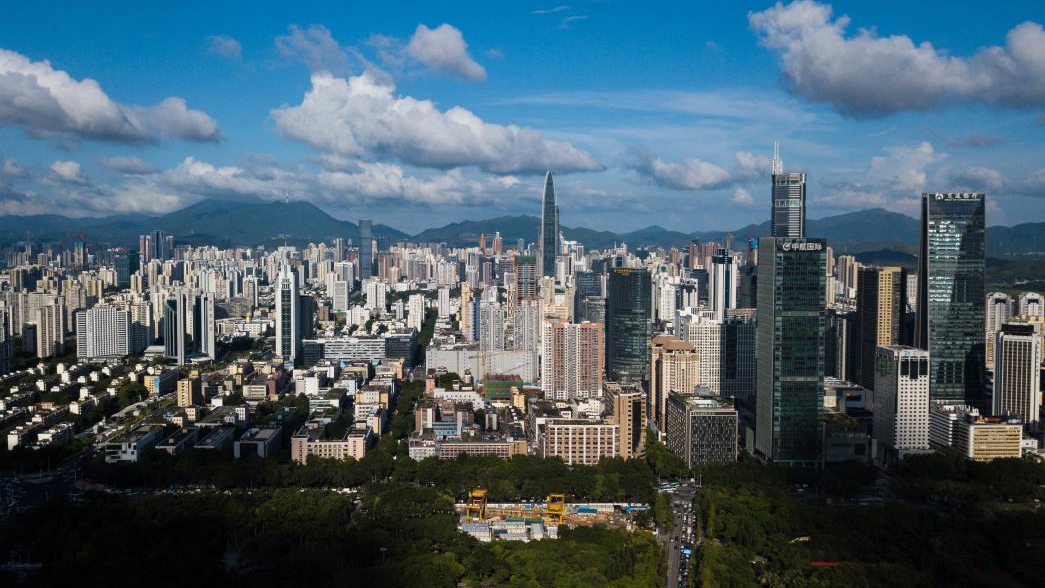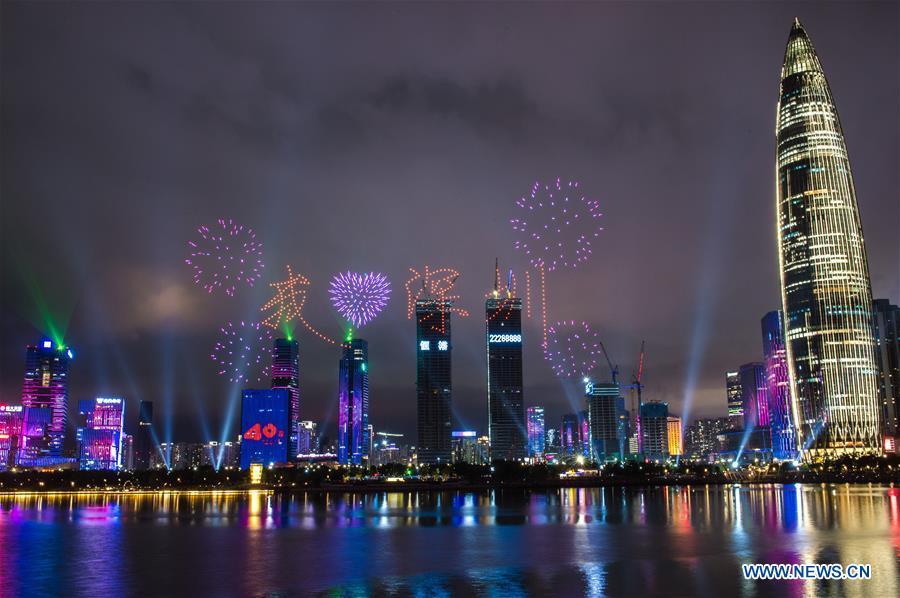
A view of Shenzhen, south China's Guangdong Province, August 13, 2020. /Xinhua
A view of Shenzhen, south China's Guangdong Province, August 13, 2020. /Xinhua
Editor's note: Matteo Giovannini is a finance professional at ICBC in Beijing and a member of the China Task Force at the Italian Ministry of Economic Development. The article reflects the author's opinions, and not necessarily the views of CGTN.
No better city represents the miracle of China's rejuvenation over the last four decades than the southern city of Shenzhen, a former fishing village turned into a spectacular and futuristic metropolis where innovation, public services and environmental sustainability are already considered world-class.
The key to the development of Shenzhen and its vibrant economy stands in the introduction of the policy of reform and opening-up and in the designation of the city in May 1980. As China's first special economic zone and through the launch of a market-driven scheme that supported the attraction of a large number of foreign investments, the city has become instrumental in making China a prominent player in today's global economy.
To celebrate the 40th anniversary of the establishment of the special economic zone and stress the unique role that Shenzhen holds in driving China's growth, Chinese President Xi Jinping is attending a commemoration ceremony today. The visit is significant not just because of the anniversary but also because it is happening a few days before the fifth plenum of the Communist Party of China Central Committee in Beijing, where China will chart the economic and political direction for the next five years.
President Xi's trip to Guangdong Province not only marks a tribute to a metropolis that has been able to grow into a global powerhouse at over seven percent per year, becoming the third biggest city in all China behind Shanghai and Beijing, but also represents an opportunity to emphasize China's uninterrupted commitment to further domestic integration and market opening-up to the rest of the world.
Nevertheless, it would be a great mistake to think that the sole purpose of the trip is simply to celebrate the success of a single city. One should not forget that Shenzhen belongs to China's richest, youngest and most educated province, known as the country's economic powerhouse, and that it is also part of the Greater Bay Area (GBA), which is the ambitious national plan to integrate Guangdong Province with the Special Administrative Regions of Hong Kong and Macao.

A light show in Shenzhen, south China's Guangdong Province, August 26, 2020. /Xinhua
A light show in Shenzhen, south China's Guangdong Province, August 26, 2020. /Xinhua
In this sense, Macao's Chief Executive Ho Iat Seng and Hong Kong Chief Executive Carry Lam's attendance at the ceremony can be seen as a sign of strategy alignment and further integration between Hong Kong and the Chinese mainland.
The relationship between Hong Kong and Shenzhen, already financially linked through the Stock Connect Program launched in December 2016, represents a well-balanced partnership that combines the comparative advantages of Hong Kong as an international financial hub and provider of capital and Shenzhen as a world leader in technology innovation and home of some of the biggest tech companies in the world.
If today China's observers unquestionably consider the country as one of the world's fintech leaders, this can be explained by the central government's strategy of a supportive regulatory framework, its optimal allocation and utilization of national assets, as well as the presence of a vast digital-savvy population and by a deep mismatch between the demand for innovative financial products and the limited solutions provided by traditional financial institutions.
At this point, critical voices could argue that it would probably be better to pave the way to a more favorable government policy framework in favor of the ever-growing Shenzhen, considering the increasing importance of technology for national economies in this century and taking into account that last year the city surpassed Hong Kong for the first time in terms of GDP contribution.
However, it is not the government's plan or intention to create a winner-take-all competition within the Greater Bay Area but to create a collective and flourishing region where each city can contribute with its own strengths and where a "grown-up" Shenzhen can be the perfect role model for the rest of the country by representing China's determination and visionary approach to achieve its ambitious goals.
At a time of post-pandemic recovery, when human-to-human contact has been momentarily suspended, and increasing external pressure from the United States, only through further integration between Shenzhen and the two special administrative regions and continuous opening-up of the domestic market to capitals, talents and trade, will China be able to write a prosperous future for the Greater Bay Area and the rest of the country.
(If you want to contribute and have specific expertise, please contact us at opinions@cgtn.com)